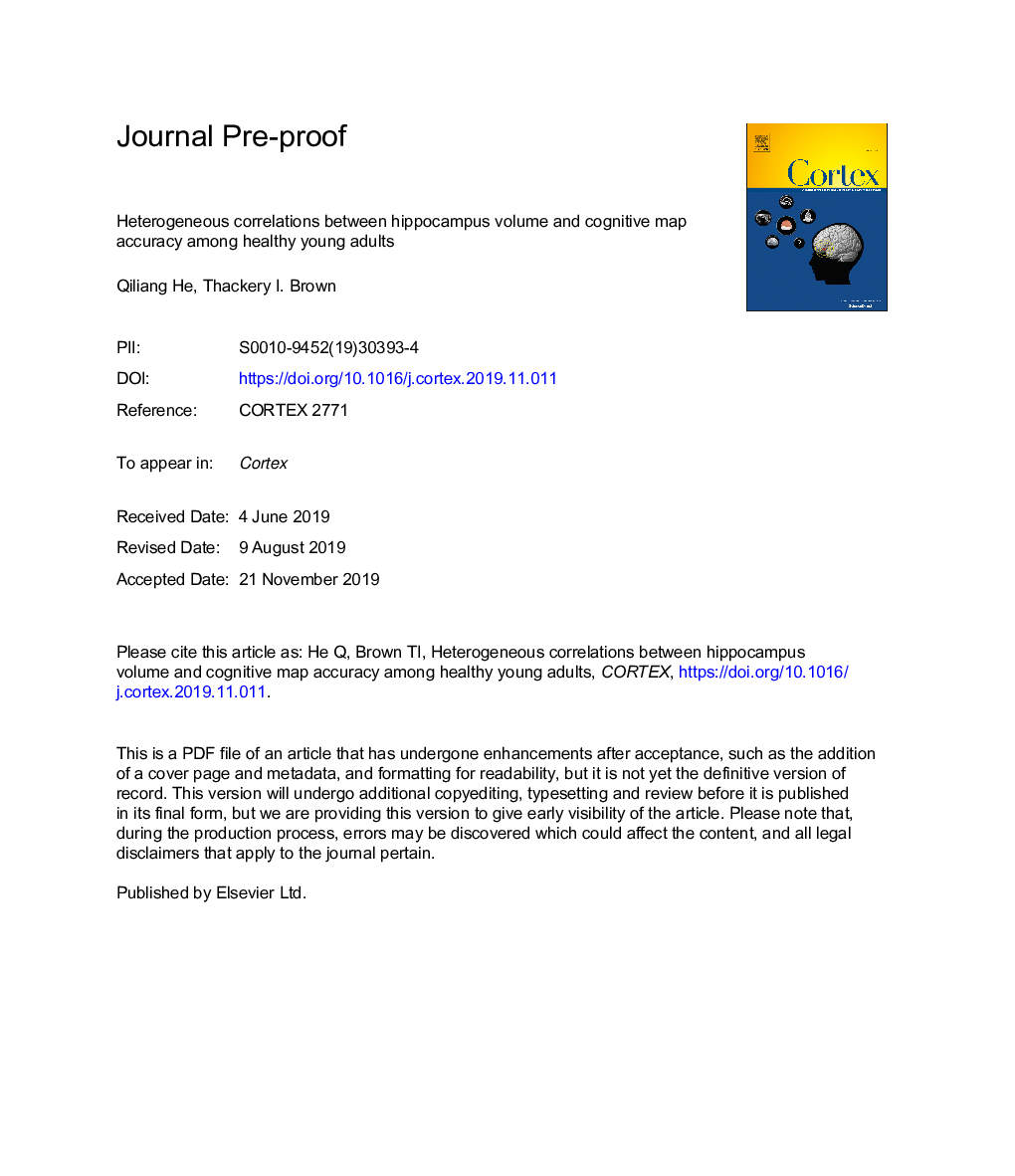| Article ID | Journal | Published Year | Pages | File Type |
|---|---|---|---|---|
| 13458643 | Cortex | 2020 | 24 Pages |
Abstract
Marked individual differences in the ability to mentally map our environment are pronounced not only among people of different ages or clinical conditions, but also within healthy young adults. Previous studies have shown that hippocampus size positively correlated with spatial navigation ability in healthy young adults, navigation experts, and patients with hippocampus lesions. However, a recent pre-registered study (Weisberg, Newcombe, & Chatterjee, 2019) with a large sample size (n = 90) did not observe this correlation in healthy young adults. Motivated by evidence that self-report sense of direction (SOD) could have a profound impact on how individuals utilize environmental cues, and that different navigation strategies could have opposite impacts on wayfinding performance in individuals with different cognitive map formation (CMF) abilities, we reanalyzed the publicly available dataset from Weisberg et al.'s study. We tested the influence of participants' SOD and CMF abilities on hippocampal volume-performance relationships. We find evidence that the non-significant correlation could envelop heterogeneous correlations among subgroups of individuals: the correlation between the right posterior hippocampal volume and spatial learning performance is significantly higher among individuals with high spatial ability than individuals with low spatial ability. This pattern of performance was observed for both SOD and CMF moderations of the relationship between hippocampal volume and spatial learning. While our re-analyses are fundamentally exploratory in nature, the new results imply that the relationship between hippocampal volume and spatial learning performance might be more complicated than previously thought.
Related Topics
Life Sciences
Neuroscience
Behavioral Neuroscience
Authors
Qiliang He, Thackery I. Brown,
